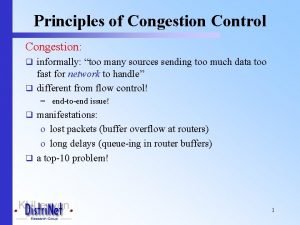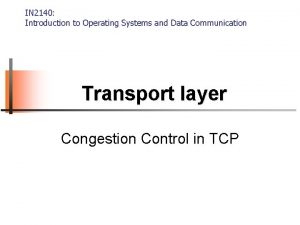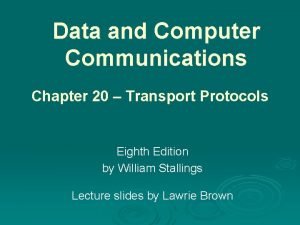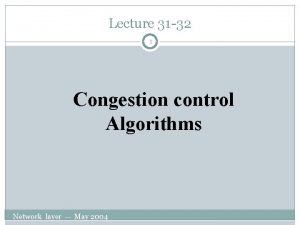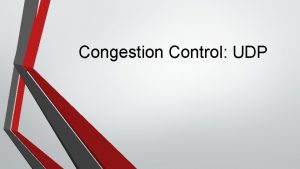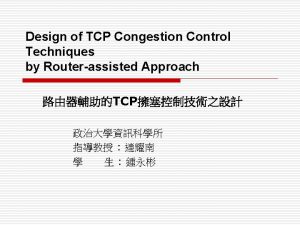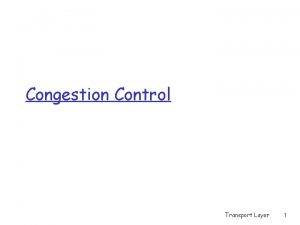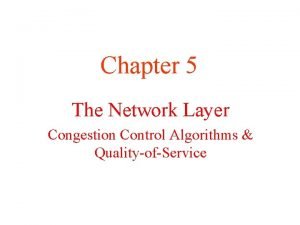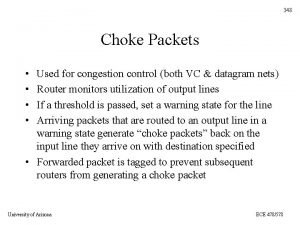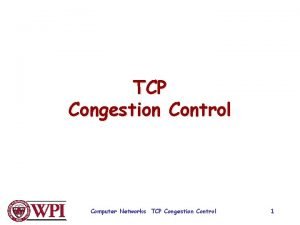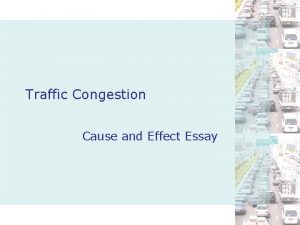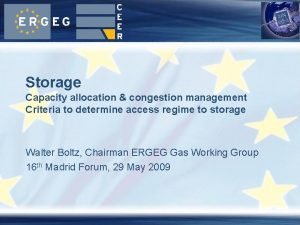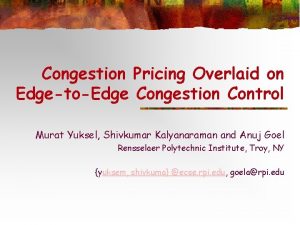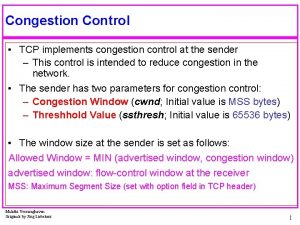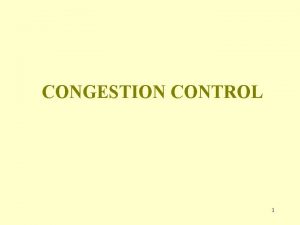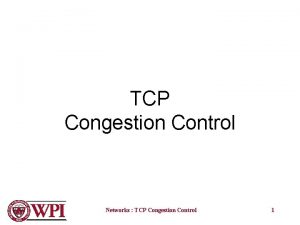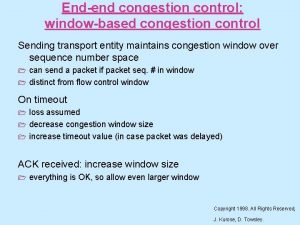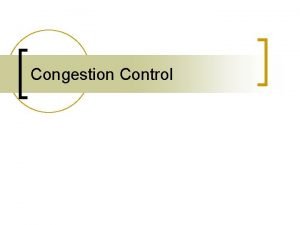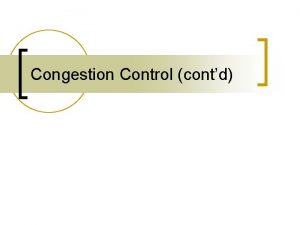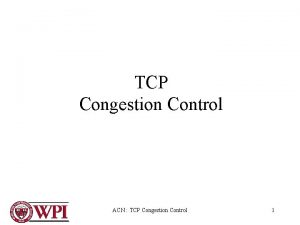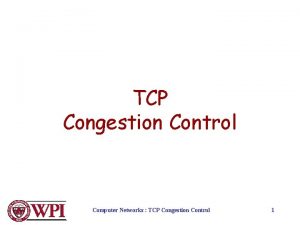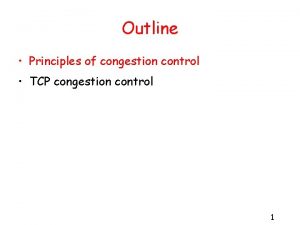Resource pricing and the evolution of congestion control




















- Slides: 20

Resource pricing and the evolution of congestion control By R. J. Gibbens and F. P. Kelly

A proportionally fair pricing. A fair distribution according to a price the user is willing to pay. Why ? How ?

Rates according to shadow pricing • Let • Then The change in the rate is:

Rates according to shadow pricing • If w(t) = wr Then the stable point of the system is : A proportionally fair per unit charge.

Congestion Mechanisms • Creating various measurements and congestion control algorithms in the network itself (routers). [floyd and fall] • Creating incentives for the end nodes to use congestion control – charge aware TCP

Different approaches to charge aware TCP • Paris metro pricing • Smart market

The Expected Cost and Shadow price

The Expected Number of marks

When distribution is more general Thus

Congestion Algorithm 1 the Elastic User(w) Where

Congestion algorithm 2 File Transfer(F, W) Elastic User that changes the Payment.

Comparison with the Internet Packet conversation principle A new packet isn’t put into the network until the old packet leaves = self clocking

Current congestion algorithm disadvantages • Not user specific. • Dropping packages is an extreme mechanism for congestion control. • The rate at which the signals a generated in the source.

Response of end-nodes to Congestion • Jacobson – Average Rate • Elastic user - Inverse proportion to

Jacobson Average Rate in our Equations • If the user needs the average rate of Jacobson than the utility function would produce that rate.

Self Clocking in our Equations When no congestion indications are present File-transfer is doubling it’s rate (with proportion to T).

Self Clocking in our Equations • Elastic User can be self clocking if cwnd increased by • So the change in the rate is :

Game Theory Model • If the user is price-aware he will maximize: • The solution is When

Game Theory The average paying is When r= is constant and equal Then Conclusion – users shade their bids if they have market power

Concluding remarks By appropriately marking the resources end-nodes are provided with the necessary information to make efficient use of the network resources
 Pincuegula
Pincuegula General principles of congestion control
General principles of congestion control In2140
In2140 Tcp congestion control
Tcp congestion control Traffic throttling and load shedding
Traffic throttling and load shedding Congestion prevention policies
Congestion prevention policies Principles of congestion control in computer networks
Principles of congestion control in computer networks Congestion control in virtual circuit
Congestion control in virtual circuit Udp congestion control
Udp congestion control Principles of congestion control
Principles of congestion control Principles of congestion control
Principles of congestion control Congestion control in network layer
Congestion control in network layer Choke packet
Choke packet Size of tcp segment header
Size of tcp segment header General principles of congestion control
General principles of congestion control Resource leveling is the approach to even out the peaks of
Resource leveling is the approach to even out the peaks of Perbedaan antara resource loading dan resource levelling
Perbedaan antara resource loading dan resource levelling Hyperemia vs congestion
Hyperemia vs congestion Causes of traffic congestion essay
Causes of traffic congestion essay Hemodynamic disorders
Hemodynamic disorders Capacity allocation and congestion management
Capacity allocation and congestion management

